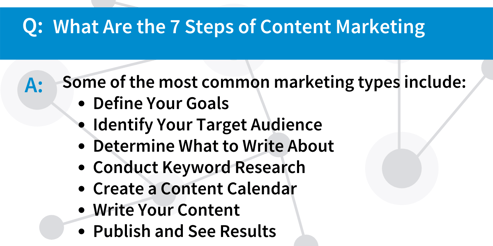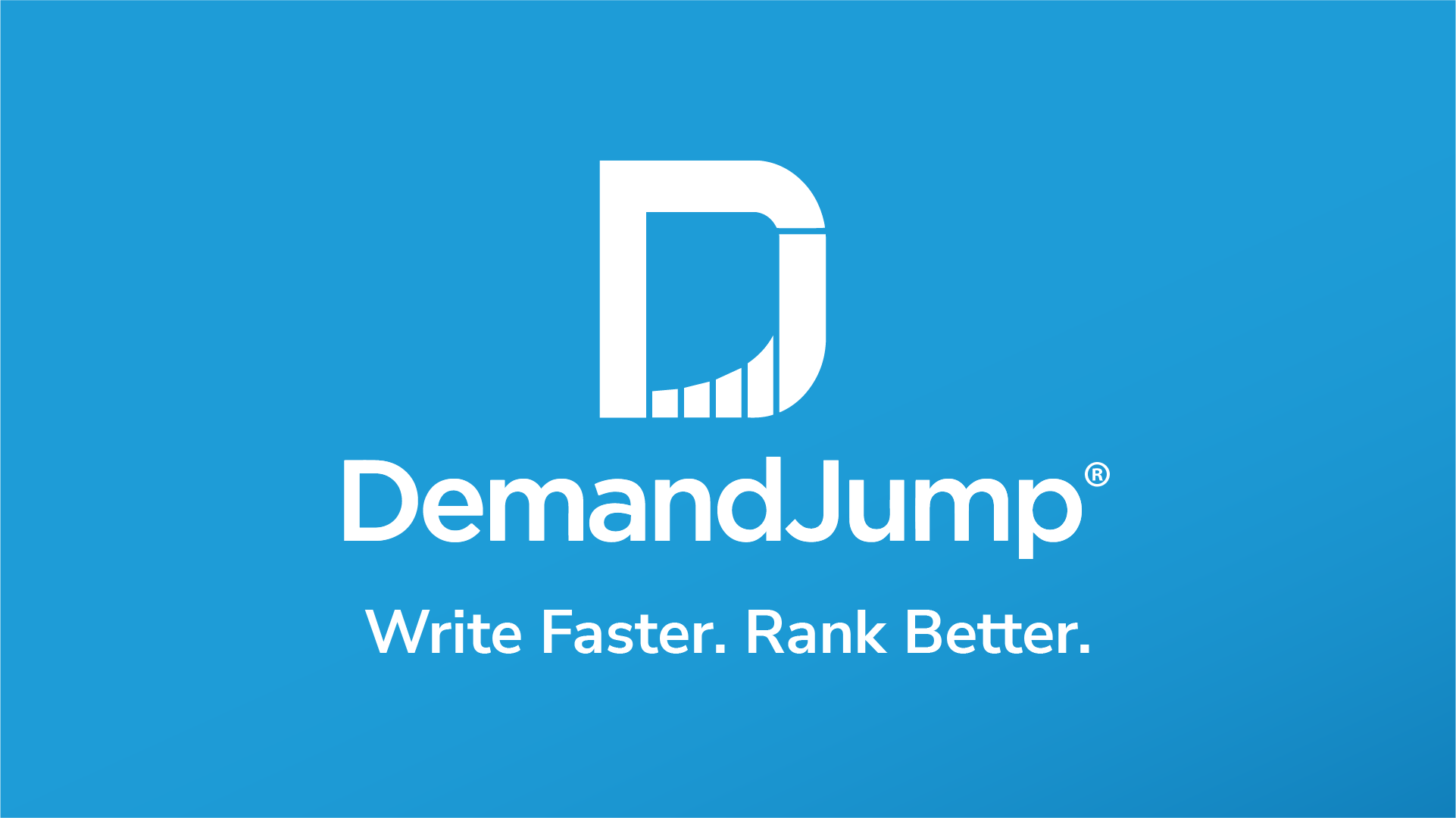In recent years, content marketing has become a critical component to more comprehensive marketing strategies. Gone are the days of relying solely on print newspaper ads and t-shirt sponsorships. Companies that want to get ahead of their competitors and stay there need to leverage content marketing. Therefore, expert content marketers are in high demand. But what is content marketing really about? And how can someone become an expert in it? One way is through an online content marketing course, like ours at DemandJump University.
Before jumping into content marketing courses online though, it might be worthwhile to get a better understanding of what content marketing entails. To that end, consider this blog a course description or preview. In it we are going to cover some of the basics, including:
- Content marketing 101
- Content marketing strategy
- Content marketing courses
How Do I Get Started In Content Marketing?
While a content marketing course on Google or even here at DJU is a good resource for acquiring a content marketing certification, it probably is not the logical starting point for someone who has never heard of or worked in content marketing before. Instead, it might make more sense to read a handful of articles on the topic, or even take a moment to consider the content marketing that you see everyday.
Are you reading blogs on LinkedIn? Maybe you are watching TikToks or Instagram Reels about “products you didn’t know you needed.” Perhaps you are a self proclaimed “big podcast person,” with episodes for your daily commute or workout. In today’s digital age, it is practically impossible to avoid content marketing, and starting with these examples is an excellent way to get started. But what all falls under content marketing? Let’s take a look.
What Is Content Marketing in Digital Marketing?
Content marketing is a form of marketing that revolves around the creation, publication, and distribution of content for a target audience. It is important to note that content marketing is a form of inbound marketing. That means that, as opposed to outbound marketing which aims to distract an otherwise engaged audience, content marketing works to attract an audience purely out of the value the content itself offers.
For example, content marketing can include things like:
- How-to videos instructing the audience on a specific task
- Blog posts educating the audience on a specific topic of question
- E-Books related to your company or industry
- Webinars discussing industry or product related buzz
And frankly so much more. In fact, there are billions of pieces of content created every single day, according to LinkedIn. As you can probably tell just from the list above, the goal of content is to attract an audience purely based on the value of the content. Perhaps the two most important things content can offer are storytelling and information.
By telling stories, it is easier to show an audience rather than tell them why a company or product is worth using. Show them how your software saves them time and money. Illustrate the joy of owning an RV. Help them imagine a healthier future through storing their stem cells. The list goes on and on.
When you think about who is the best at content marketing, at their crux, it's companies that can tell stories that resonate with the audience on an emotional and intellectual level. The latter is where the informative side of content really comes into play. The best content exists for a reason. It should answer your customer’s burning questions (which DemandJump can help you identify with our platform). Questions like:
- Where can I get a COVID-19 test today?
- How much does a new tractor cost?
- What is the best SaaS product for revenue retention?
If you really want to get meta with it, this content is probably answering some of your questions about content marketing courses, right? Why else would you be here? So with that in mind, let’s move on to some other topics you might be wondering about.
What Are the 7 Steps of Content Marketing?

Now that you have been introduced to content marketing as a concept, it makes sense to understand the multiple steps involved in content marketing strategy templates. Depending on the source you are checking or the time an article is written, the exact number and order of steps might vary. Typically speaking however, most industry experts agree on some version of the following 7 steps for written content.
- Define your goals: There is no sense in creating content just for the sake of content. Each piece should contribute to a larger plan and therefore be curated with specific goals in mind. So before you start, it’s important to know what you want to achieve and a general timeline for when you’d like to achieve it. This might be increasing website traffic. Instead of just saying “increase website traffic” try to get specific, measured, and timely with your goal. For example, it might read “increase website traffic by 30% within three months.” Your goals will be specific to your company, but all of your content should be created with those goals in mind.
- Identify your target audience: If you had to give a presentation to a room full of second graders and another to a room full of lawyers, you probably wouldn’t say the same thing, right? The same logic applies to content. Know your audience, their pain points, their reading level, what they care about, whether they know industry specific terminology, and incorporate all of that into your content.
- Determine what to write about: Historically, marketers made educated assumptions as to what content to write about. It might have been a guess about what the audience cares about, or a hunch that the audience would listen to what the marketers want to say. Gone are the days of guesswork. With tools like DemandJump, it is easy to know what your audience cares about. DemandJump tells you exactly what your audience is searching for on Google, in their exact language. Not only that, but it also tells you how likely someone who cares about topic X is to care about topic Y. Then, once you have a few related topics, DemandJump will tell you which topics to write about in a pillar strategy and what keywords to include by generating a Content Brief.
- Conduct keyword research: Keywords and phrases are essentially high-value terms that your prospective audience uses and that Google has deemed important for SEO (search engine optimization) value. Therefore it’s important to include those keywords in your content so that you can both increase your SEO rank and also make sure you are providing valuable information to your audience. DemandJump’s content briefs show you clusters of keywords and questions that are highly relevant to your topic.
- Create a content calendar: Like we mentioned earlier, having a timeline for your content marketing is important. Especially if you intend to produce a lot of content, staying on top of deadlines will be important to not getting overwhelmed. Additionally, your content calendar will serve as a roadmap, helping you understand what type of content you are producing and how it will all relate.
- Write your content: Once you know what you want to write about, what keywords to include, and who your audience is, it’s time to start writing. The best content generally includes keyword questions and answers, several different headers/sections to make it skimmable, and a call to action directing your audience to do something. You will also want to do topical research to ensure that everything you are writing is factual and up to date.
- Publish and see results: Now that your content is written, you can publish it and see how the results compare to your original goals. Some best publishing practices that we recommend at DemandJump include:
- Backlinking between pieces of related content
- Publishing in batches
- Upgrading old content to include new keywords
How Can I Learn Content Marketing?
There are a handful of ways to learn content marketing once you decide you are interested. Traditional collegiate degrees can help you as well as content marketing courses for free online.
 What Degree Is Content Marketing Under?
What Degree Is Content Marketing Under?
Typically speaking, there is no degree specifically for content marketing. However, many of the transferable skills needed to be successful are baked into degrees in:
- Marketing
- Communications
- Journalism
- English
- Advertising
- Public Relations
While there is some specific terminology and strategy associated with content marketing, essential skills include:
- Clear communication
- Time management
- Deadline oriented
- Storytelling
- Strategic planning
- Creative/Design skills
If you don’t have a marketing degree or want to supplement it with more specific content marketing education, a content marketing certification through Google or other web-based providers (like DJU!) are a good option.
Which Online Certification Is Best for Marketing?
The best certification for marketing is the one that’s right for you. If you want to know which marketing certification is best, you need to know what you hope to get out of it. For example, some certifications might be somewhat of a marketing bootcamp, or even an online college course. Others might be directed by a specific platform or company. Depending on what work you want to do, or who you want to work for, some certifications may be more valuable than others. While we can’t decide which certification is the best fit for you, we can tell you a little more about what DemandJump University is, and why it may be a good option!
DemandJump University: Obsessed With Content
DemandJump is a Pillar-Based Marketing (PBM) platform and agency. PBM is a cutting edge approach to written content marketing that we invented and continue to both use and promote. The idea behind PBM is to create a comprehensive collection of written content that makes your company the authoritative SEO voice on your subject matter. With the help of a few bells and whistles, some specific tactics, and the tools in the DemandJump platform, Pillar-Based Marketing is the single most effective way to rank on page one.
The thing is, we are so obsessed with content creation and PBM that we had to spread the word. That’s where DemandJump University comes into play. With DJU, you can learn the ins and outs of pillar strategy, writing content, publishing, and so much more. While you won’t find a how-to become a content marketing manager guide, you’ll find all the information and tools you need to get DJU and PBM certified which can prepare you for a career in content.
In fact DJU offers three different course certifications:
- Pillar-Based Markteing Strategist
- Pillar-Based Marketing Writer
- DemandJump Reseller
Each certification has a handful of carefully planned courses, assessment, and videos to help you along the way!
So if you are ready to learn more, or get started, head over to our website today!












 What Degree Is Content Marketing Under?
What Degree Is Content Marketing Under?